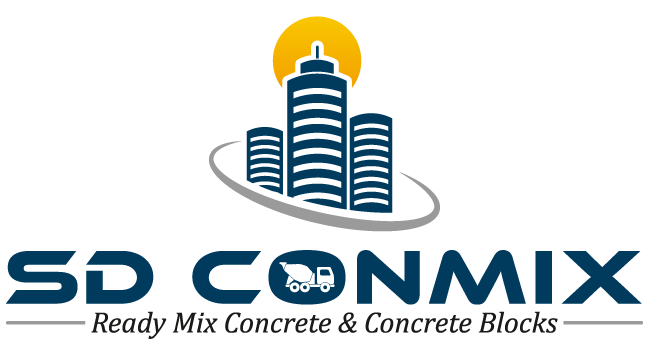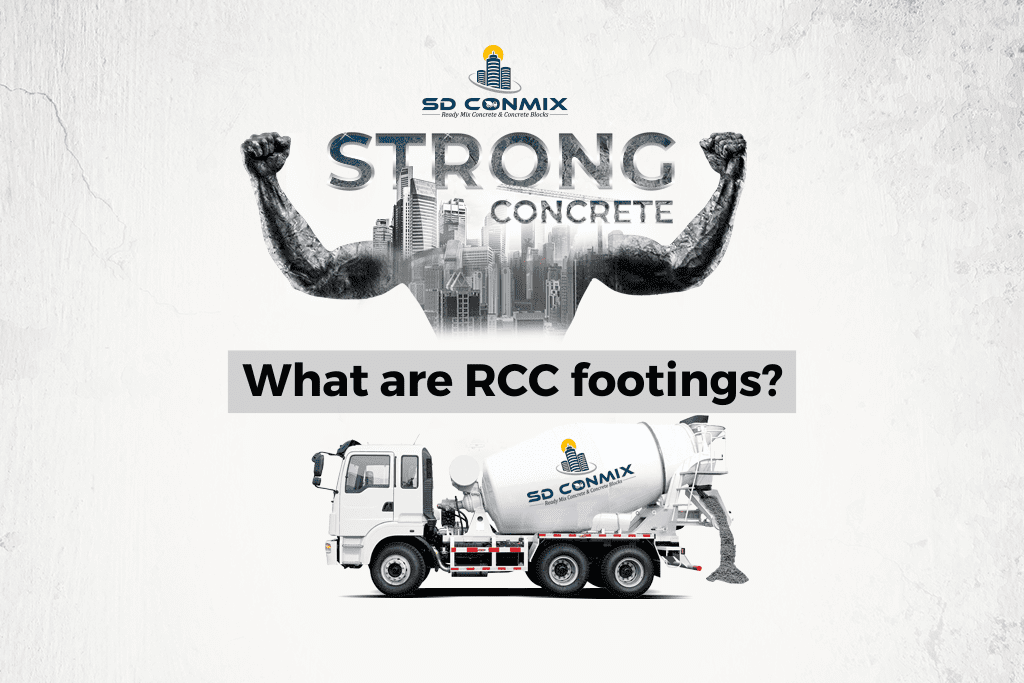RCC footings are Reinforced Cement Concrete footings. They are made up of steel bars. Footings transfer the load uniformly on the ground below, so there is no unequal settlement. RCC footings are generally adopted in buildings constructed with columns. They can be of different types: trapezoidal, block, or stepped footing. SD Conmix provides ready mix concrete for various construction projects.
Following are the types of footings:
1. Continuous wall footing: It is generally used in the load-bearing structures to support the foundation walls and load-bearing walls. In this, there is a big concrete slab below the wall and a brick wall in the center of the slab. SD Conmix provides quality mix concretefor this type of construction.
2. Isolated column footing: This supports only one column and has three types of footings namely Pad footing, stepped footing, and then sloped footing. Pad footing is generally used in local construction.
Stepped footing contains two or three rectangular or square pedestals whose width decreases towards the column junction. This type of footing consumes less concrete compared to block footing. As the name suggests, block footing is in the form of a block, which is easy to construct and consumes slightly more concrete. Sloped footing is usually used in high-rise buildings and consumes relatively less concrete.
3. Combined footing: The base of two columns is combined in this type of footing. SD Conmix provides ready mix concrete for all types of footings and also supplies quality construction material.
4. Trapezoidal combined footing: A trapezoidal footing is used when the load of one column is greater than the other and usually sloped footings are trapezoidal footings.
5. Mat or raft foundation: When the space between the columns is significantly less, a mat or raft foundation is used. In this, the base of all columns is combined. So after combining, an extensive base is formed, called a raft. The thickness of the raft foundation is more than the other types of footings. SD Conmix supplies high-quality mix concrete for construction
6. Pile foundation: Piles are used as deep foundations where the soil is very weak and has a higher groundwater table. Mostly used in bridge or dam constructions.
Conclusion: Points to be remembered for RCC footing:
1. Check the excavation for its dimensional accuracy before laying the foundation
2. Secure the vertical rods in the foundation firmly in its position
3. Use a minimum M20 grade of concrete
4. Ensure proper concrete compaction in the sloped portion of the foundation.
5. Concrete in stepped or block footings attain better compaction.
SD Conmix supplies high-quality construction material and ready concrete mix for all types of construction.

